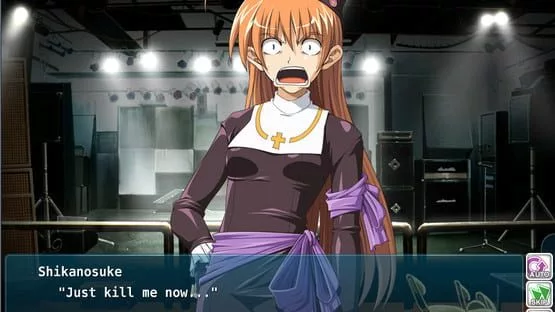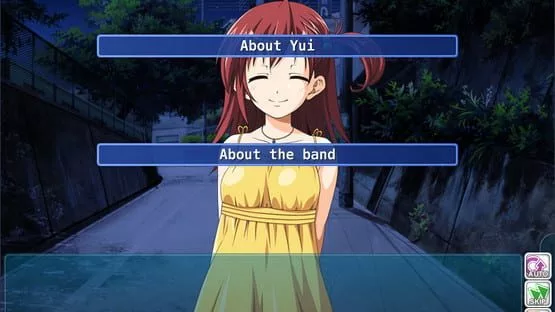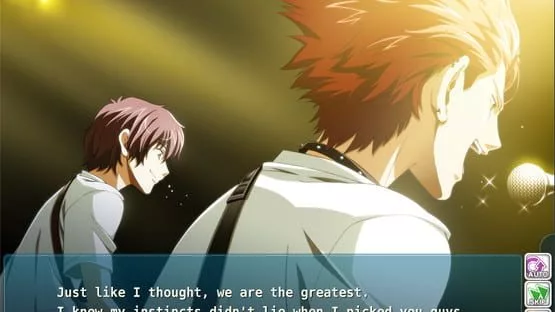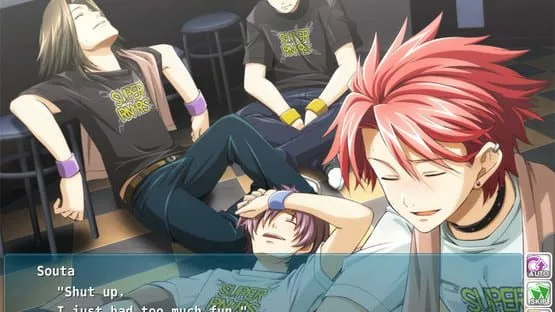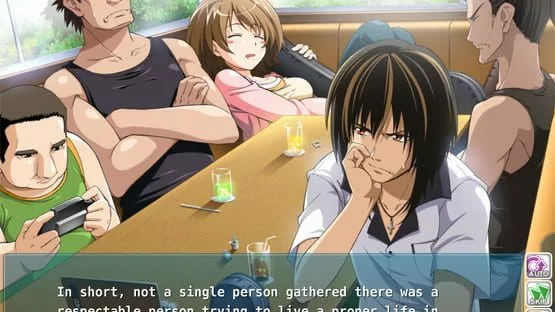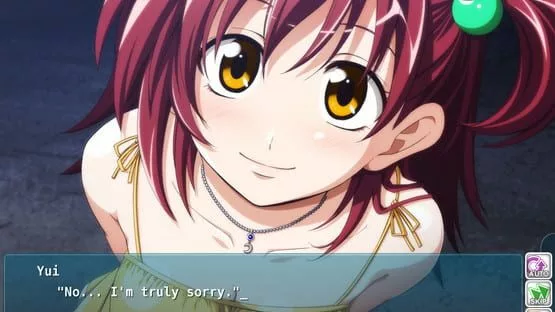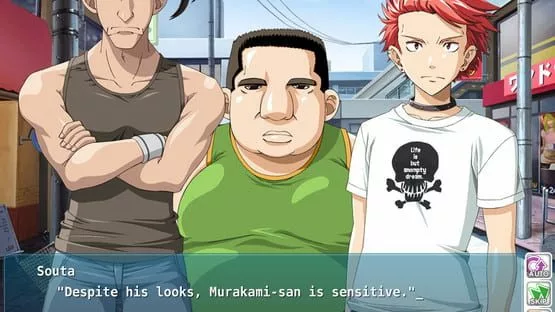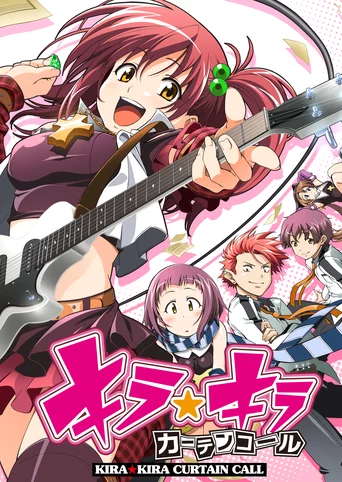
Kira Kira Curtain Call (2008)
Genres:Music, Visual Novel
Themes:Comedy, Erotic, Romance
Game modes:Single player
Story:This is an after story of Kira Kira. It has two parts: First and Second Stage
First stage concentrates on hotblooded young guy named Souta Honda. He loved two things in this world: rock and his childhood friend Yui Hoshimoto. But attempts to improve relations with both always turned out a total disgrace for him. After one more fail he promised Yui that he'll form his own band and became "bright like the sun" to make her love him...
Second stage is, in a way, a continuation both for Souta's story and original Kira Kira story. It tells about preparations for the large concert celebrating the 5th anniversary of Murakami's group, Happy Cycle Mania and bonds all old and new characters together.Show more
Vote to bring this game to GOG and help preserve it.46
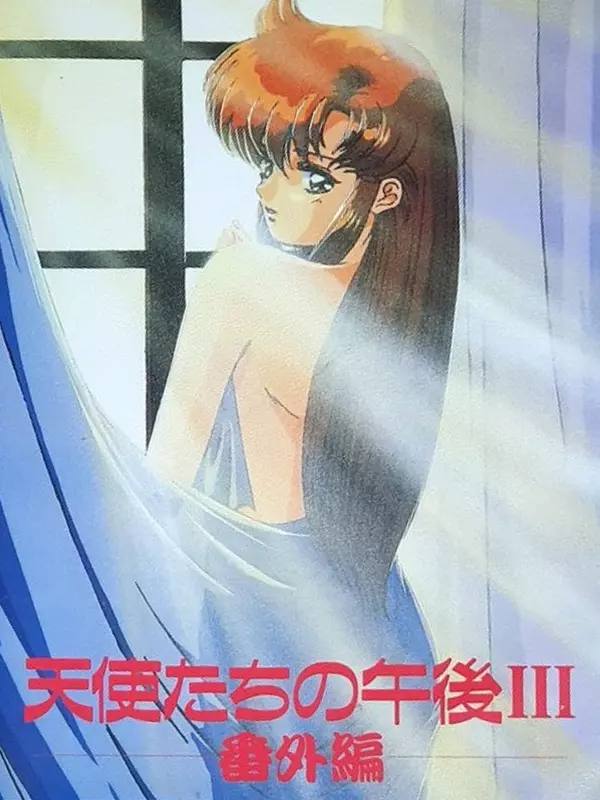
Tenshi-tachi no Gogo III: Bangai-henThe second Bangai-hen (a side story) in the Tenshitachi no Gogo series is set in the same environment and features recurrent characters from Tenshitachi no Gogo 3: Ribbon. The protagonist is a high-school student, who also happens to be the brother of Haru Okamoto, the main love interest in Ribbon. Like in most other games in this series, the story revolves around the main character's effort to have sex with every female character, including school mates and colleagues in part-time jobs.
The gameplay is identical to the one in Ribbon or in the previous Bangai-hen: the player proceeds through still screens, typically depleting the available menu commands (verbs and object sub-menus) until a new command appears or an event is triggered. Like in most other games in the series, there are multiple dead ends and possible actions that lead to premature end of the game.Erotic
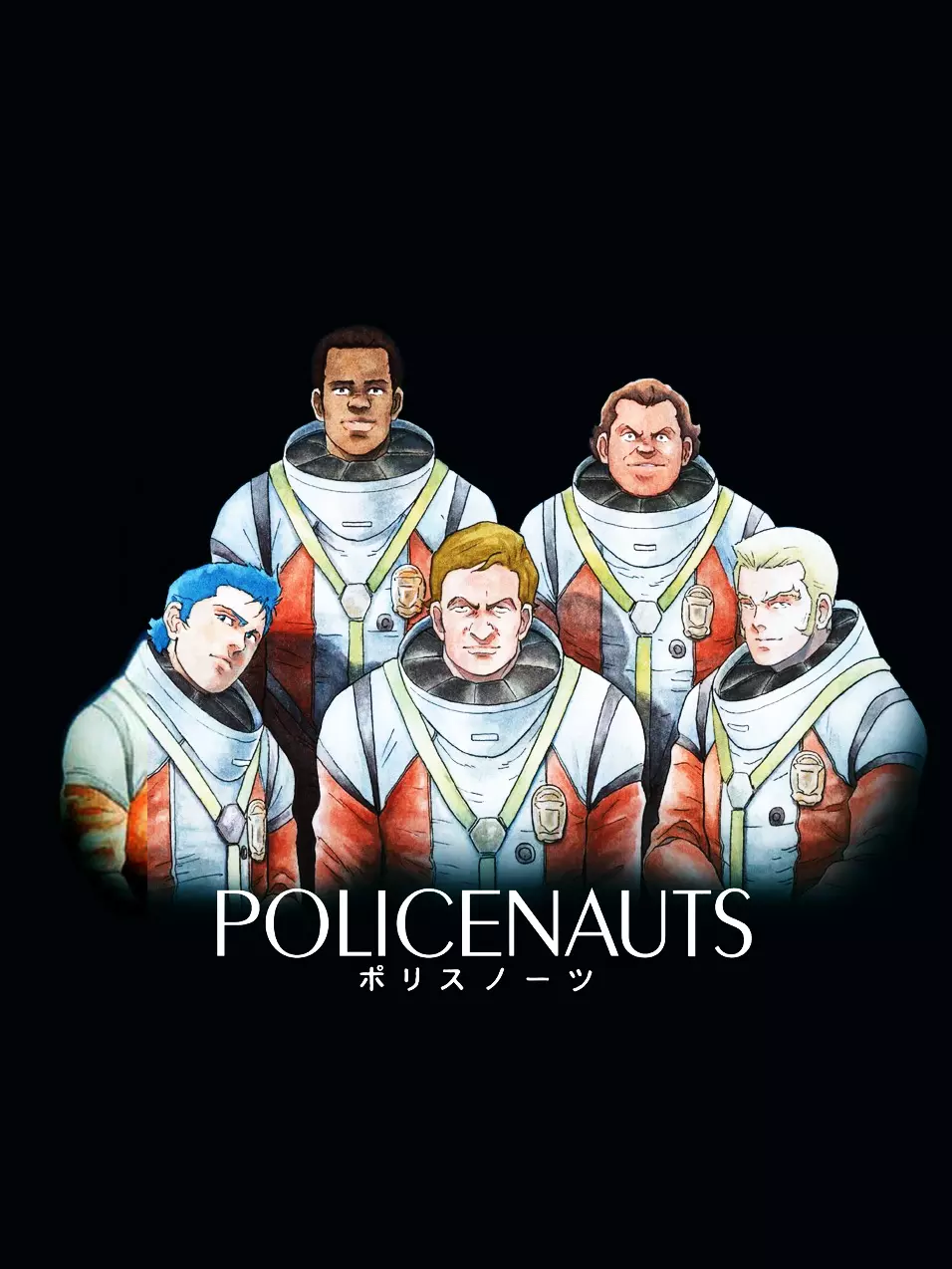
PolicenautsPolicenauts is an interactive movie/graphic novel/adventure game with a hard science fiction storyline, written and directed by Hideo Kojima, and published by Konami. It was initially released for the PC-9821 computer platform in 1994, followed by remade versions for the 3DO in 1995, and the PlayStation and Sega Saturn in 1996. The game has never been officially released outside Japan, despite plans for an English localization of the Saturn version. On August 24, 2009 (in honor of the 46th birthday of the game designer, Hideo Kojima), an unofficial English translation patch was released onto the internet.
The game is set in a primarily first person perspective and uses a point-and-click interface: the player can move the cursor and have the protagonist (Jonathan Ingram) analyze objects around his environment or talk to other characters in the game. Like in Snatcher, the game features shooting segments where the player must defend their character from incoming enemies. The player can use the shooting trainer at the police department to test their reflex and accuracy. There are numerous puzzles in the game, including an event where the player must dismantle a bomb by following their partner's instructions.
The console versions of the game all include support for their respective mouse peripherals. The Saturn version features light gun support for the shooting segments.
The game was notable for being an early example of extensive voice recording in video games. It also featured a theme revolving around space exploration and occasional full-motion video cut scenes. The gameplay was largely similar to Snatcher, but with the addition of a point-and-click interface and some first-person shooter segments. Policenauts also introduced summary screens, which act to refresh the player's memory of the plot upon reloading a save, an element Kojima would later use in Metal Gear Solid. The PlayStation version of Policenauts could also read the memory card and give some easter egg dialogues if a save file of Konami's dating sim Tokimeki Memorial is present, a technique Kojima would also later use in Metal Gear Solid.Action Science fiction
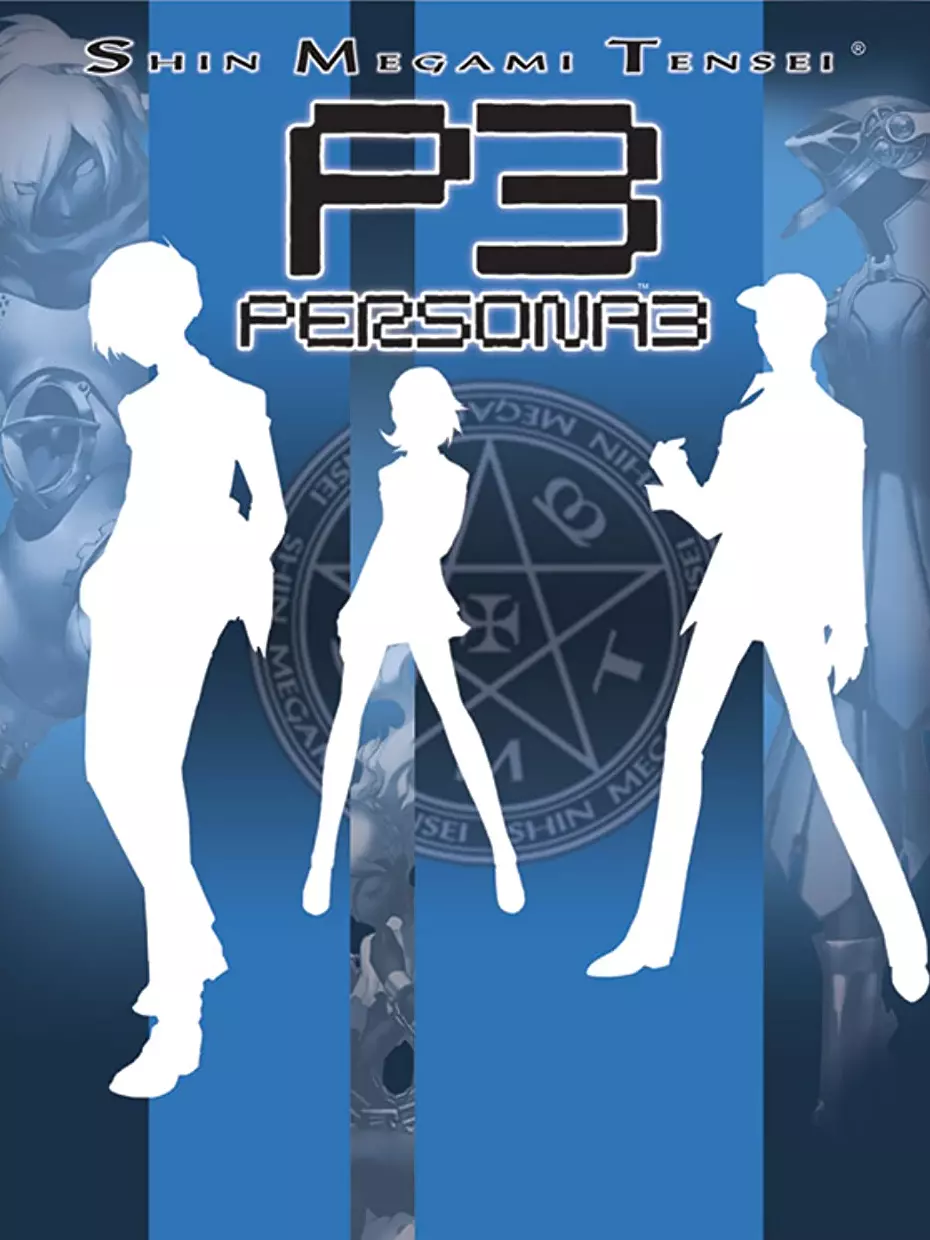
Persona 3Shin Megami Tensei: Persona 3 is a role-playing video game developed by Atlus. In the game, the player takes the role of a male high-school student who joins the Specialized Extracurricular Execution Squad (SEES), a group of students investigating the Dark Hour, a time period between one day and the next that few people are aware of. During the Dark Hour, the player enters Tartarus, a large tower containing Shadows, creatures that feed on the minds of humans. To fight the Shadows, each member of SEES is able to summon a Persona, a manifestation of a person's inner self. In addition to the standard elements of role-playing games, Persona 3 includes elements of simulation games, as the game's protagonist progresses day by day through a school year, making friends and forming relationships that improve the strength of his Personas in battle.Action Fantasy Science fiction Drama
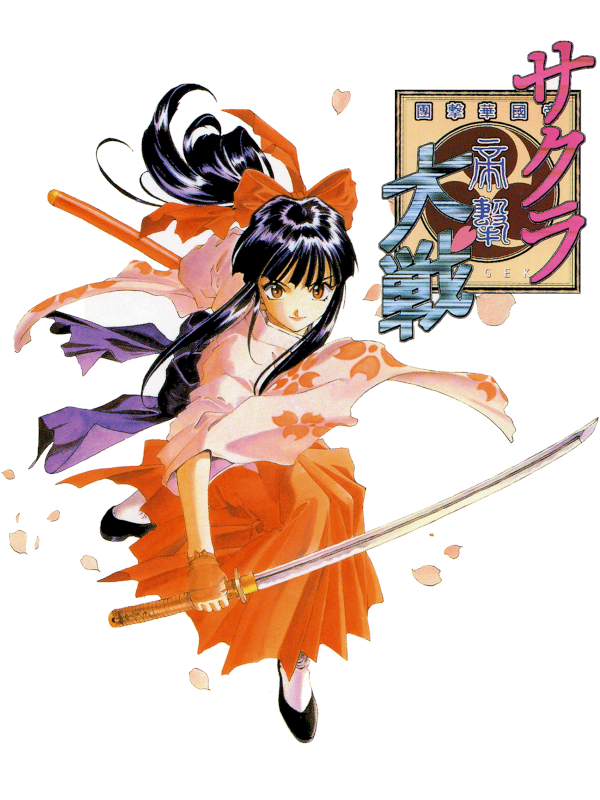
Sakura TaisenReleased in 1996 for the Sega Saturn, Sakura Taisen is the first game in the iconic Japanese game franchise. It combines strategy RPG elements with dating sim-style character interactions to make "A Storm of Romance amid Taishou Cherry Blossoms!"Fantasy Romance
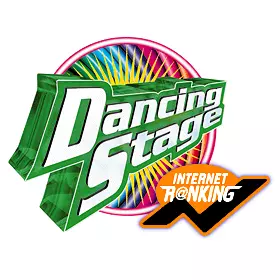
Dancing Stage INTERNET R@NKINGDancing Stage INTERNET R@NKING Version is also known as "DDR Version 1.5".
Konami released an upgrade to the Dancing Stage arcade cabinet known as the "Internet Ranking" version, though the name is slightly ambiguous since the machine itself does not possess the ability to connect to the internet. An interesting feature of this machine is that it contained 6 more songs than the original arcade version, as advertised by a sticker on the arcade machine's marquee. The 6 additional songs were all production's by Konami's own music composers.
The Internet Ranking version of the game added an extra option to the song selection wheel which had similar functionality to the built-in nonstop mode, except the player must play a selection of songs which have already been chosen. The selection of songs on an Internet Ranking machine changes depending on the current month.
Upon completing an Internet Ranking nonstop course, the machine would display the player's final score along with a code consisting of numbers and letters, which could be submitted to Konami's website as part of a Europe-wide ranking chart. The overall highest ranking players were awarded prizes by Konami for their achievements.
Added songs:
- "It's Like That" (cover of Run–D.M.C. vs. Jason Nevins)
- "Last Thing On My Mind by Step Ahead (cover of Steps)
- "Uh La La La" by Party All Night (cover of Alexia)
NOTES:
- The game is based on DanceDanceRevolution 2ndMIX with some differences such as:
- The game logo is based on DanceDanceRevolution's logo.
- The STEP BATTLE songs were not included in this version.
- The song list consists of 6 DanceDanceRevolution songs and 7 from DanceDanceRevolution 2ndMIX.
- The typos found in some banners, such as PUT YOUR FAITH IN ME (Jazz Groov), were fixed.
- Although the new licenses credit the songs' original artists, all 3 licenses are covers.
- CONFLICTING SOURCE INFO NEEDS VERIFICATION -
- https://en.wikipedia.org/wiki/Dancing_Stage
- https://dancedancerevolution.fandom.com/wiki/Dancing_Stage_EuroMIX#Internet_Ranking
- https://remywiki.com/AC_DS_1st
- https://remywiki.com/AC_DS_EuroMIXParty
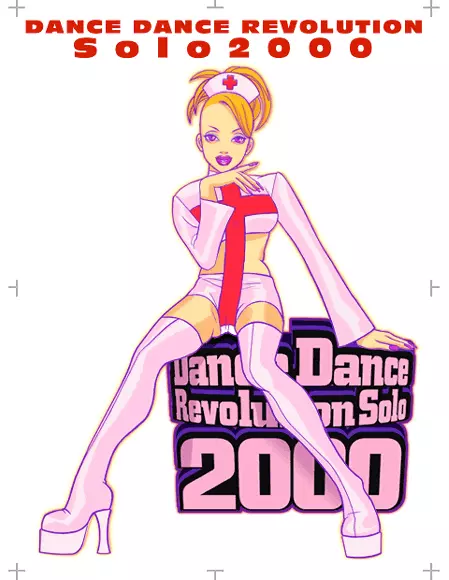
Dance Dance Revolution Solo 2000Dance Dance Revolution Solo 2000 is the second special one-player version of the Dance Dance Revolution series of music video games. It was released as an arcade game by Konami on December 15, 1999. Although only officially released in Japan, units exist worldwide. DDR Solo 2000 features 36 songs, 20 of which are new to Dance Dance Revolution.Party
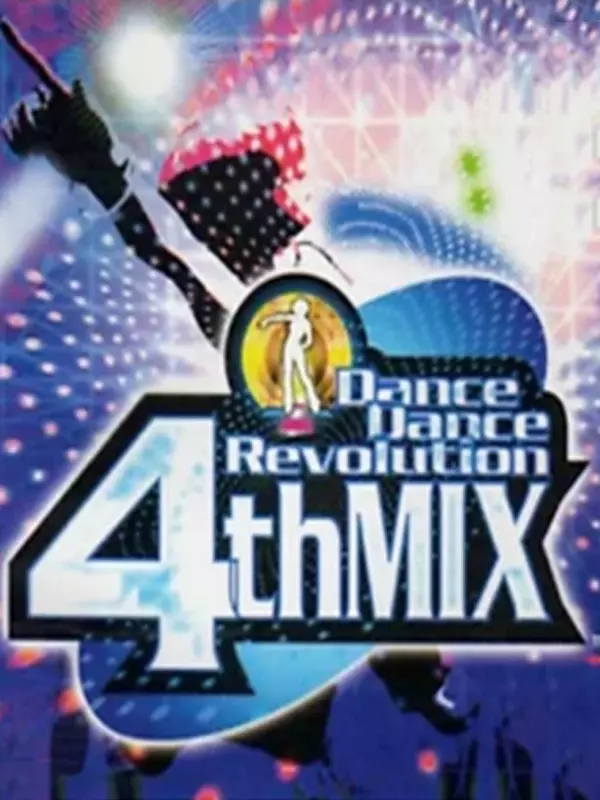
Dance Dance Revolution 4thMixDance Dance Revolution 4thMix, or 4thMix, is the 4th game in the main Dance Dance Revolution series of music video games. It was released as an arcade game by Konami on August 24, 2000. Although only officially released in Japan, units exist worldwide. 4thMix features 136 songs, 49 of which are new to this mix. Twelve of the songs are initially hidden and must be unlocked by the arcade operator. 12 songs are unlockable in 4th Mix Plus, giving them 150 songs in total. In DDR 4th Mix, new songs that first appears in DDR 3rd Mix Plus, DDR 3rd Mix Korea and DDR Solo appears in this mix.
The home version of 4thMix was released in Japan on March 15, 2001, for the Sony PlayStation console. It contains 55 songs, including 3 from Dance Dance Revolution 3rdMix (which were not present in the home version of that version) and six hidden songs: one from 4thMix Plus and one as preview songs for the next arcade version, Dance Dance Revolution 5thMix. The game also features the 6-panel mode, branded as Solo Mode.Party
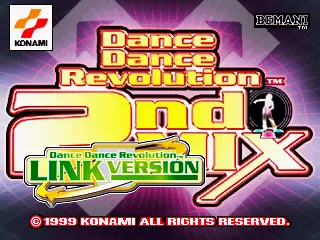
Dance Dance Revolution 2ndMIX LINK VERSIONDance Dance Revolution 2ndMix (ダンスダンスレボリューションセカンドミックス, Dansu Dansu Reboryūshon SekandoMikkusu), sometimes abbreviated as 2ndMix (セカンドミックス, SecandoMikkusu), is the second game in the Dance Dance Revolution series of music video games. It was released as an arcade game by Konami in Japan on January 29, 1999. It has a total of 32 songs: ten from the original Dance Dance Revolution arcade game and 26 all-new songs. An updated version, Dance Dance Revolution 2ndMix Link Version, was released to Japanese arcades on April 28, 1999. This version came with a PlayStation memory card reader, installed in the middle of the arcade cabinet. It supports cards that have Link Data from the home version of Dance Dance Revolution, allowing each player to save high scores and play custom step edits. 2ndMix Link Version adds five new songs to the game, two from the home version and three new licenses, for a total of 37 songs. Future Dance Dance Revolution releases in Japan, up to and including Dance Dance Revolution Extreme, integrated Link Data functionality in-game. However, these required different home games to produce different Link Data formats: 3rdMix, 4thMix, 4thMix Plus, 5thMix and New Version.Party
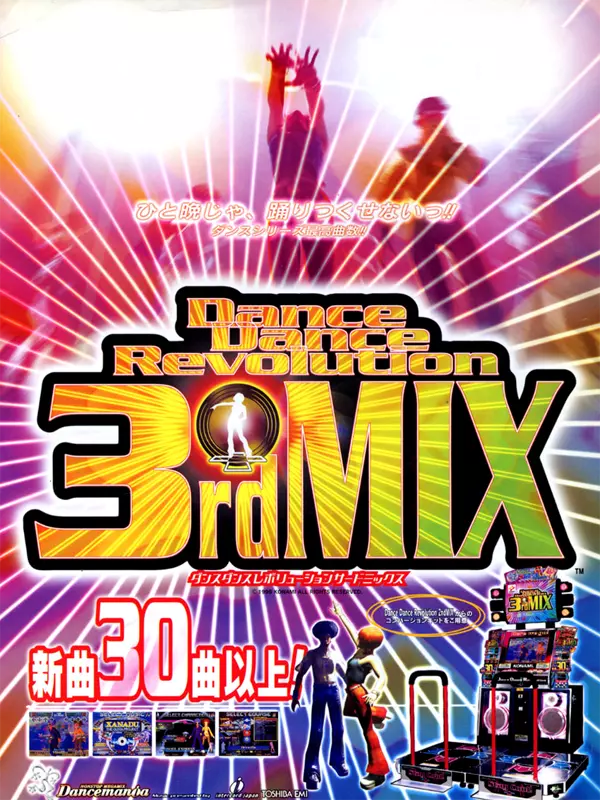
Dance Dance Revolution 3rdMixDance Dance Revolution 3rdMix, or 3rdMix, is the 3rd game in the Dance Dance Revolution series of music video games. It was released in the arcades by Konami on October 30, 1999. Although only officially released in Japan, units exist worldwide. It has a total of 68 songs, 35 of which were new to Dance Dance Revolution.
The core gameplay of 3rdMix is the same as the previous Dance Dance Revolution games. 3rdMix featured a brand new scoring system, instead of being heavily combo-based like the last two mixes, combos are of virtually no importance. The maximum score for each song is 10,000,000 (all Perfects). Perfects are worth twice as many points as Greats, and steps toward the end are worth progressively higher points than steps toward the beginning. In nonstop mode, a 2x, 3x and 4x multiplier apply to the 2nd, 3rd and 4th songs respectively, making a perfect nonstop worth 100,000,000 points.
3rdMix was also the first version of DDR where different beats (compared to a 4-beat register) alternate different colors, making 1/4, 1/8, 1/12 and 1/16 steps look different and making it easier for the player to recognize changing rhythms. This color scheme is called "vivid" mode, whereby the old scheme of all arrows being the same color is henceforth referred to as "flat" mode. Flat appears as an option and modifier in later versions of DDR.
This release marked the first time lyrics were displayed during gameplay for every song. This can be turned on or off by the arcade operator. This feature was later dropped from future arcade mixes, although some home versions contain this as an option, and most European Dancing Stage versions contain this on by default.
3rdMix also allowed to choose characters, and while their purpose is for the most part aesthetical, the chosen character affects which beatmania remix song can be played at one playthorugh.Party

Dance Dance Revolution Solo Bass MixDance Dance Revolution Solo Bass Mix is the first special one-player version of the Dance Dance Revolution series of music video games. It was released as an arcade game by Konami on August 19, 1999. Although only officially released in Japan, units exist worldwide. DDR Solo Bass Mix features 16 songs, all of which are new to Dance Dance Revolution. Most of the music comes from the Dancemania BASS albums,hence the name "Solo Bass Mix". A Solo Bass Mix machine can be upgraded to DDR Solo 2000. This is the first game that features a live-action intro.Party


